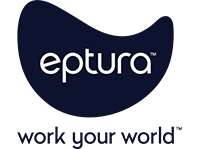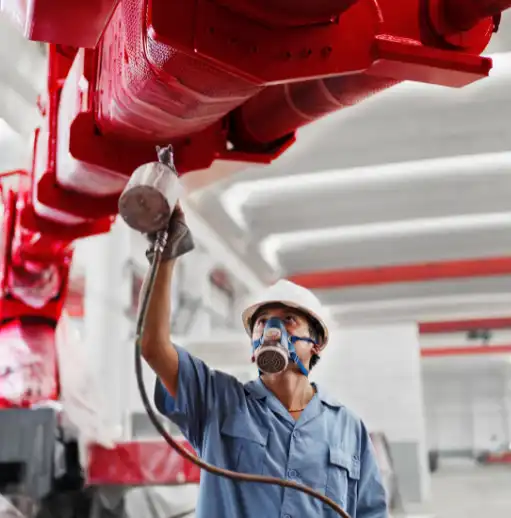
A wide range of industries are set to drive up global prices for electricity. Electric cars already accounted for 9% of new car sales in the first three quarters of 2024, while electricity demand from data centers is expected to see up to a 17% compound annual growth rate by 2030, according to a Deloitte report. Facility and workplace leaders can control electricity costs with several proactive strategies that leverage key space management analytics.
Why are office spaces so energy-intensive?
Offices consume a significant amount of electricity because of their extensive use of systems and equipment, including:
- Lighting: Office spaces often rely on artificial lighting, which can be a substantial energy drain, particularly in areas that are not optimized for natural light.
- HVAC: These systems are crucial for maintaining comfortable temperatures and air quality, but they can be major energy consumers, especially in larger buildings or during extreme weather conditions.
- Computers and electronics: Desktop computers, laptops, servers, and other electronic devices are essential for daily operations and can collectively use a lot of power, especially if they are left running during non-working hours.
- Appliances and equipment: Copiers, printers, coffee machines, and other office appliances also contribute to energy consumption, especially if they are inefficient or left on unnecessarily.
- Security systems: Cameras, access control systems, and alarm systems require continuous power to ensure the safety and security of the office and its occupants.
One of the first steps to improving energy efficiency is tracking occupancy and utilization data, so these systems are only on when employees need them.
How can you leverage occupancy and utilization trends to cut energy costs?
By analyzing trends in occupancy and utilization, workplace and facility managers can make informed decisions that lead to significant energy savings and a more efficient workplace.
Lighting schedules
Analyze when employees tend to use specific spaces to make informed adjustments to lighting systems. For example, if data reveals that a particular meeting room is rarely used after five in the evening, you can set the lights to turn off automatically during those hours, reducing not only reduces unnecessary energy consumption but also extends the lifespan of lighting fixtures. Similarly, if a common area is frequently occupied during lunch hours, you can ensure that the lights are on and at an appropriate brightness level during that time. By aligning lighting schedules with actual occupancy patterns, you can create a more efficient and comfortable environment for your employees, ultimately leading to cost savings and improved productivity.
Heating and cooling
Identify peak occupancy times and adjust HVAC systems accordingly. For example, if a floor is heavily used in the morning but nearly empty in the afternoon, you can reduce heating or cooling during the less occupied periods. It’s an approach that can significantly lower your energy bills. Maintaining optimal temperatures during peak times can also enhance employee comfort and focus, leading to higher productivity and fewer complaints.
Predictive maintenance
Monitor the usage patterns of equipment and facilities to predict when maintenance is needed. For example, if a particular area is used more frequently, the HVAC system there might require more frequent servicing. Predictive maintenance can help you avoid costly breakdowns and reduce downtime. By staying ahead of potential issues, you can maintain a consistent and reliable environment, which is crucial for keeping operations running smoothly and efficiently.
Energy consumption
Track energy use in relation to occupancy to identify inefficiencies. If a space is consuming a lot of energy but employees are rarely there, it might be a sign that adjustments are needed. For example, a data center that is only used during specific hours can have its energy consumption monitored and optimized to match those usage patterns, leading to substantial savings, especially in large companies where energy costs can be a significant part of the budget. By pinpointing and addressing these inefficiencies,
How can you increase energy efficiency by rightsizing?
One of the most strategic ways to use occupancy and utilization data is to rightsize your real estate portfolio. By analyzing which areas are underutilized and which are overused, you can make informed decisions about space allocation, reducing or expanding spaces, and even consolidating multiple locations into one. For example, if data reveals that a conference room is rarely used, you might consider converting it into a more frequently needed space, such as a quiet work area or a break room. You can not only optimize the use of your existing space but also reduce the need to heat, cool, or light unused areas, leading to significant cost savings.
In a large company with multiple locations, this data can be particularly valuable. You might find that certain floors or buildings are consistently underutilized, while others are always at capacity. These insights can help you make the case for reducing the size of underutilized spaces or even closing entire locations. If a particular location is consistently overused, you might need to expand or reconfigure the space to better meet the needs of your employees. By aligning your real estate portfolio with actual usage patterns, you can ensure that every square foot is contributing to your business goals.
So, a large corporation might discover that its satellite office in a different city is only used by a small fraction of its workforce. By consolidating this office into a larger, more central location, the company can save on rent, utilities, and maintenance costs. Similarly, if a department is growing rapidly and requires more space, you can use occupancy data to identify underutilized areas within your current facilities and reallocate them accordingly.
How can you leverage real-time occupancy data to increase energy efficiency?
By leveraging both historical data and real-time sensor information, office and facility managers can make informed decisions that lead to significant energy savings and a more efficient workplace.
Motion sensors for lighting
Install motion sensors in areas like hallways, restrooms, and meeting rooms to turn lights on only when someone is present, reducing unnecessary lighting. Imagine a large office building where lights are often left on in empty rooms. By installing motion sensors, you can ensure that lights are only on when needed, leading to substantial energy savings. For a company with multiple locations, i can mean a noticeable reduction in electricity costs, making your facilities more cost-effective and efficient.
Occupancy sensors for HVAC
Use occupancy sensors to adjust the temperature in real time. For example, if a room is empty, the HVAC system can be set to a more energy-efficient mode, helping you save on heating and cooling costs without compromising employee comfort. In a large company, where HVAC systems can be a major expense, this can lead to significant financial benefits. By ensuring that energy is only used where and when it is needed, you can also create a more efficient and comfortable work environment.
Smart thermostats
Implement smart thermostats that can learn and adapt to occupancy patterns. These devices can automatically adjust the temperature based on the number of people in a space. For example, a smart thermostat can lower the temperature in a conference room when it’s not in use and raise it when a meeting is scheduled.
Energy monitoring systems
Deploy sensors to monitor energy usage in real time. These systems can alert facility managers to spikes in energy consumption, allowing them to investigate and address issues promptly. For example, if a sudden spike in energy use is detected in a particular area, you can quickly identify and resolve the problem, whether it’s a malfunctioning piece of equipment or an unexpected increase in occupancy.
Real-time alerts and notifications
Set up a system that sends real-time alerts to facility managers when energy usage exceeds normal levels to help quickly identify and address inefficiencies. For example, if a particular floor is using more energy than usual, you can receive an alert and investigate the cause, whether it’s a malfunctioning HVAC system or an unexpected increase in occupancy.
Modern intelligent worktech drives energy efficiency
Modern workplace management solutions help workplace leaders leverage both trends and real-time occupancy data deliver comfortable, productive, and cost-effective spaces that support overall organizational goals. With automated data capture through visitor management, sensors, and desk and room booking all on one system, they have the insights they need to plan strategically and react quickly.
Discover how to get the most from your spaces.





